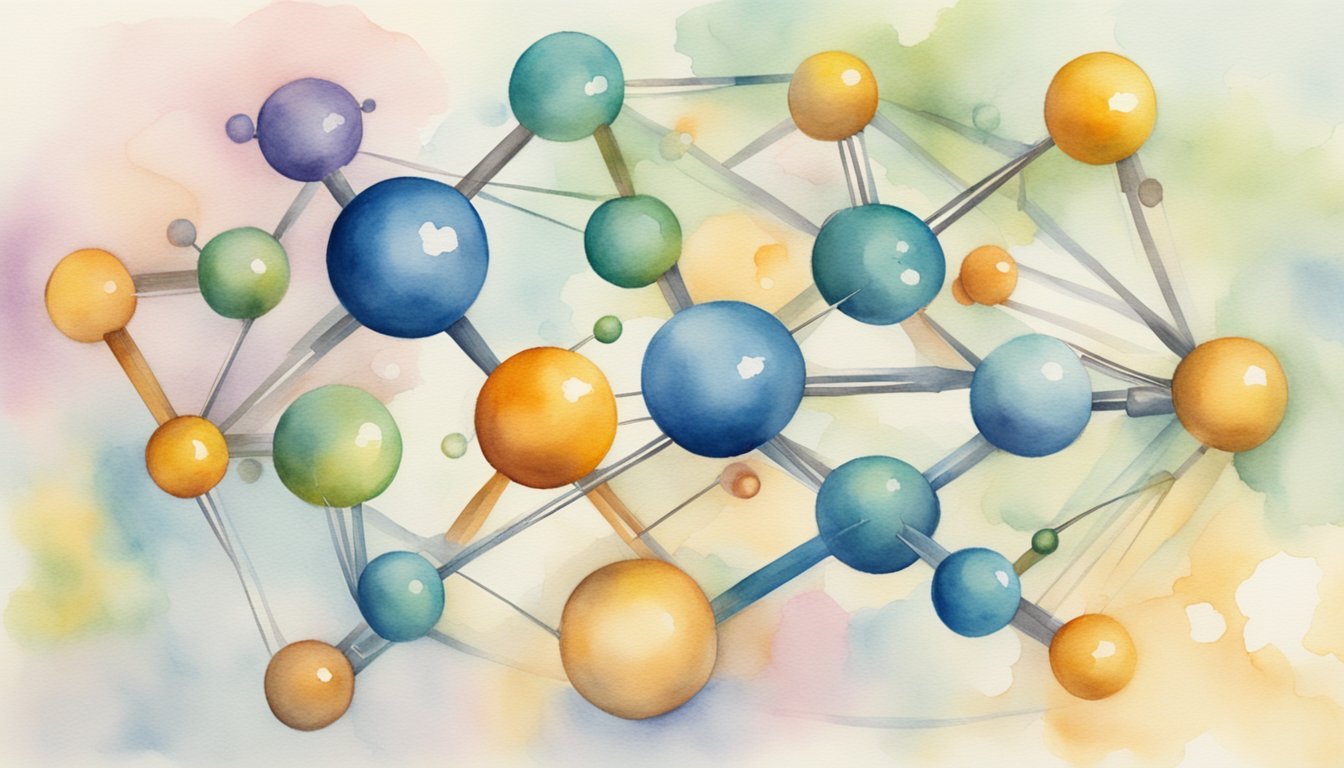Fundamentals of Chemical Bonds
A chemical bond is like the universe’s way of gluing atoms together to form compounds.
Imagine atoms as social butterflies; they just love to hang out with other atoms! To do so, they share, donate, or borrow electrons, creating a stable relationship.
Atoms are made of protons, neutrons, and electrons.
It’s the electrons, especially those in the outermost shell, known as valence electrons, that are the main players in chemical bonding.
These electrons can be shared or transferred, leading to different types of bonds.
-
Covalent bonds: occur when atoms share valence electrons.
Picture two atoms holding hands — that’s basically what they’re doing at the electronic level.
-
Ionic bonds: form between positively charged ions (which lost an electron) and negatively charged ions (which gained an electron).
It’s an exchange program at the atomic scale!
In some situations, atoms share electrons but not equally.
This leads to polar covalent bonds, where the shared electrons hang out more with one atom, making it a bit negative, while the other atom misses out and gets a bit positive.
As for energy, it’s key to the bonding process.
Forming a bond releases energy, making the compound more stable than its separate atoms.
Meanwhile, breaking a bond requires energy input.
Now, the reason behind all this bonding? Atoms strive for a full valence shell, which is the ticket to stability in the atomic world, just like achieving zen in a yoga class.
Chemical bonds are the force that holds molecules together in the chemical world, and these bonds determine the physical and chemical properties of all the stuff around us, from the air we breathe to the water we drink.
Curious for more details? Dive into the essentials of how atoms create a covalent bond or explore the quantum-mechanical picture of a chemical bond.
Types of Chemical Bonds

Chemical bonds are the essential forces that hold atoms together in molecules, creating the diverse range of substances we encounter every day.
From the air we breathe to the water we drink, understanding the various types of bonds provides insight into the very fabric of the material world.
Ionic Bonds
Ionic bonds are formed through the electrostatic attraction between oppositely charged ions, typically consisting of a metal and a nonmetal.
Ions are atoms that have lost or gained electrons, with the former becoming positively charged cations and the latter negatively charged anions.
A classic example of an ionic bond is observed in sodium chloride, commonly known as table salt, where sodium surrenders an electron to chlorine, resulting in a stable ionic crystal structure that adheres to the octet rule.
Covalent Bonds
Covalent bonds are all about the sharing of electrons between atoms, usually nonmetals, allowing them to achieve a full outer shell of electrons in accordance with the octet rule.
These bonds can range from nonpolar covalent, where electrons are shared equally, such as in a molecule of methane, to polar covalent bonds, where atoms like oxygen and hydrogen share electrons unequally, as seen in a water molecule.
This sharing leads to the formation of stable molecules with various chemical properties due to the types of atoms involved and the nature of their covalent bonding.
Metallic Bonds
Metallic bonds are somewhat different; think of them as a communal sharing where electrons kind of go with the flow among a lattice of metal cations.
This “electron sea model” gives rise to properties like high electrical conductivity and the capacity to conduct heat due to the delocalized nature of the metallic bonding electrons.
Metals share these delocalized electrons freely, which also contributes to the malleable and ductile characteristics of metals, allowing them to be shaped and stretched without breaking.
Intermolecular Forces and Properties

Intermolecular forces are the invisible connections that influence the physical state and properties of matter, acting as a sort of molecular glue that holds substances together.
Hydrogen Bonding
Hydrogen bonds are powerful intermolecular forces that occur when a hydrogen atom covalently bonded to a highly electronegative atom, such as oxygen, nitrogen, or fluorine, experiences an attraction to another electronegative atom in a neighboring molecule.
This bonding is critical in shaping the structure of DNA and determining the unique properties of water, such as its high boiling point relative to other similar-sized molecules.
Van Der Waals Forces
Van der Waals forces encompass two main types: London dispersion forces and dipole-dipole interactions.
London dispersion forces are weak, temporary bonds that occur due to random fluctuations in the electron cloud of molecules, creating temporary dipoles that induce others in close proximity.
They grow stronger as the size of the molecules increases.
Dipole-dipole interactions, on the other hand, occur between molecules that are permanently polar, where the positive end of one molecule is attracted to the negative end of another.
Physical Properties of Compounds
The strength and types of intermolecular forces have a profound impact on the physical properties of a compound, including the melting point, boiling point, and solubility.
Substances with strong intermolecular forces, such as hydrogen bonds, usually have higher melting and boiling points, as more energy is needed to disrupt these forces.
For example, water, with its strong hydrogen bonds, has unusually high boiling and melting points for its molecular weight.
Intermolecular forces also affect whether a compound will be soluble or insoluble in water; polar or ionic compounds are typically soluble, whereas nonpolar compounds are insoluble.
Understanding how these forces behave helps to predict the behavior of everyday substances, from why salt dissolves in water to why oil and water don’t mix.

